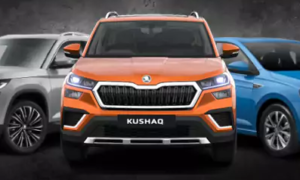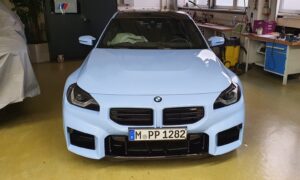Nearly 14 percent more fuel is saved, and the owner is already thinking about how to make the design even better.

Back in the late 1960s, when Chrysler first showed off their flying masterpieces, onlookers scratched their heads. Dodge Charger Daytona and Plymouth Superbird looked really ridiculous with their huge noses and sky-high wings, yet they utterly dominated NASCAR racing circuits. Lesson learned: aerodynamics are important.
This silver 2003 Subaru Impreza wagon is not going to win any races. Gas station dominance, however, has been achieved with a fairly simple adjustment to the Subie’s bloated rear end. It’s true that a mileage improvement of 13.7% isn’t very impressive. This aero-minded Impreza owner, though, saved a ton of cash on petrol by spending just a few dollars on basic supplies and an hour to put it all together. This is not even his first effort at creating a hypermile machine.
The channel’s name, “Think Flight,” gives away its topic—aerodynamics—in this video. In light of historically high gas costs, this person adapted aeronautical expertise to his own vehicle. We’ll let the video give you the technical details, but know that big-butted automobiles create turbulence in the air behind them. It implies the vehicle needs more force to go ahead since it doesn’t slide through the air as readily. You may reduce energy consumption by doing away with the wind resistance. And so we have this Subaru, which looks like it came straight out of a horrible 1980s science fiction movie, but really saves gas.
To think in unconventional ways:
Pieces of foam were cut to 1.5 inches thick and duct taped to the back of the automobile to create an aero-behind. Small cardboard vortex generators were affixed to the underside of the automobile in different spots and cardboard wheel coverings were pasted to the wheels. The only real planning that went into it was making sure the taillights and license plate were still legible while giving the vehicle a distinctively pointed rear end. Even if it’s based on scientific principles, the actual building of it isn’t very complicated. Nonetheless, it served its purpose.
The Impreza’s baseline mileage before the upgrades was 35.6 mpg. Upgrades resulted in 40.52 mpg while driving the same route at the same time of day and filling up at the same gas station. It’s not a huge change, but it’s there, and further analysis has shown several promising avenues for improvement. But considering how little work was put into it, it’s really rather good.
The findings are not surprising since we have seen other mileage-focused designs. However, we are curious to see how the efficiency is enhanced in a Mk II aero-Impreza.
READ MORE- The 2023 Suzuki SV650 will be available in Italy in three different hues. – Top Future Cars



